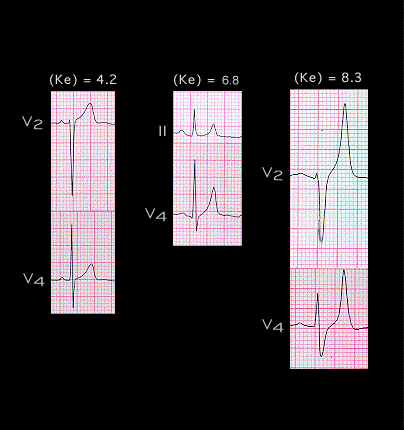
To review: At serum K levels between approximately 5.5 and 7.0 mM, the ECG changes are confined to peaking of the T wave and slight shortening of the QT interval. This reflects the increase in K conductance during the plateau phase and the phase of rapid repolarization and the fact that the resting potential has not become less negative than approximately -75 mV because at this level, the maximum rate of rise of the action potential upstroke has not decreased enough to cause conduction slowing. As K levels rise above 7.0 mM, the RMP becomes progressively less negative, dV/dt max decreases, conduction slows and the P wave and QRS complex become progressively widened. There may also be a shift in the electrical axis of the QRS complex indicating that conduction in some portions of the conducting system is slowed to a greater extent than in others.
